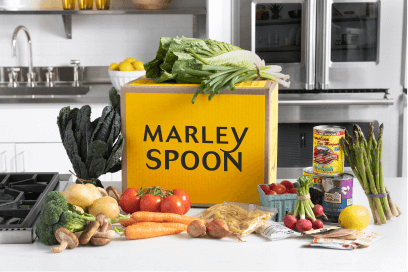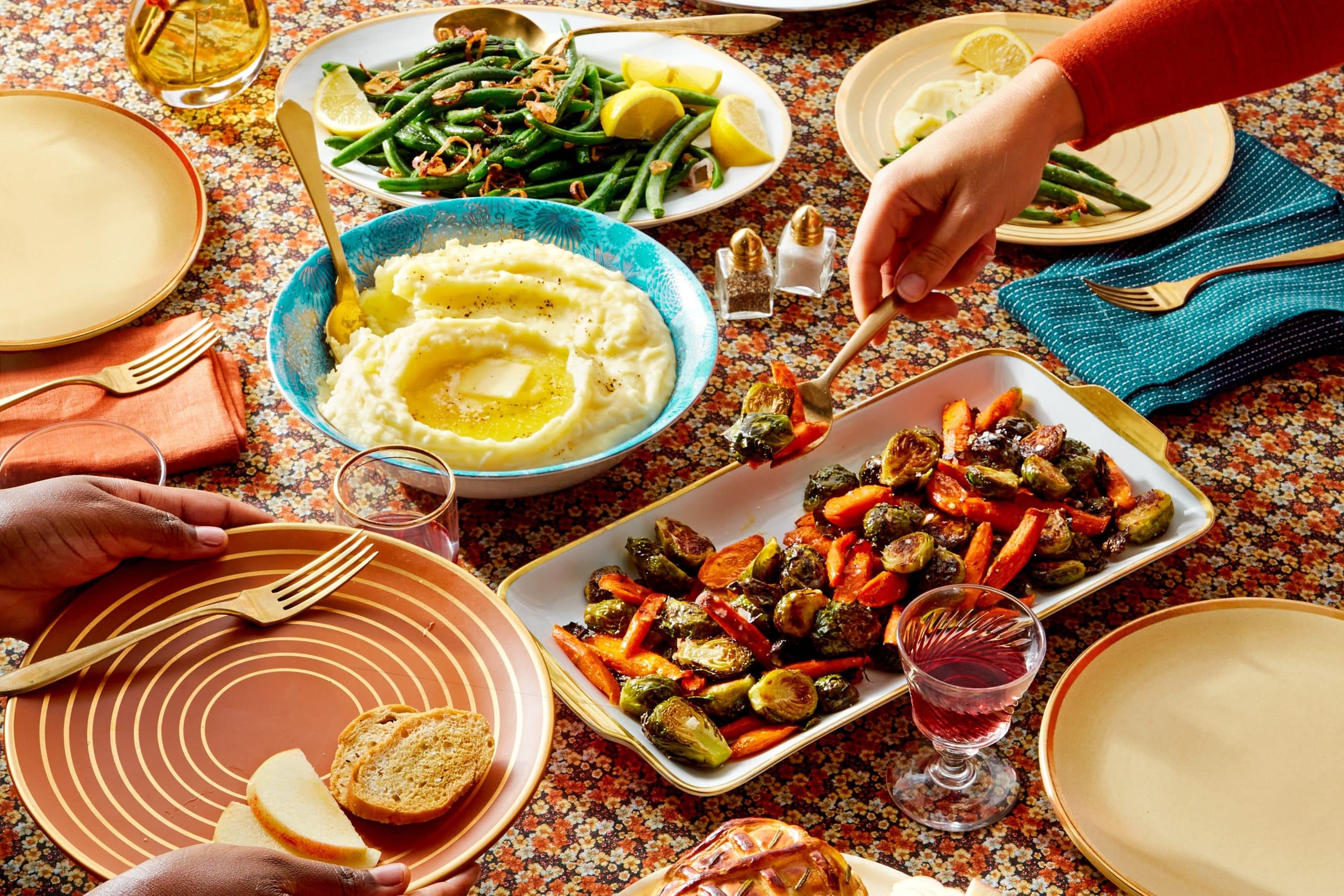Once used as currency, if you can believe it, salt is now affordable and ubiquitous, and it certainly would be hard to imagine life without it.
At Martha & Marley Spoon’s test kitchen, we actually keep a few different varieties in our salty arsenal. We wouldn’t find ourselves wearing the same pair of shoes with every outfit (Birkenstocks with a ball gown? no thanks), and we utilize different salts for different dishes in the same way.
The variety of salts can be intimidating, so we’ve broken it down for your convenience. But no matter which salt you use, be sure to adhere to the one golden rule of salt: know your palate! Whether you like things salty or less salty, choose the correct salt accordingly, and really get to know how to measure in a way that is best for you. Simple as that. Cook, relax, enjoy!

table salt
The good: Great for a wide variety of household uses as its fine grains allow for a quick dissolve, table salt comes in handy when adding salt to a dish that is already prepared. You wouldn’t want to over stir a delicate soup just to incorporate a bit of salt, so go ahead and reach for that shaker in the center of the table.
The not so good: Because the crystals are so fine, it can be easy to lose control with table salt. Ever have too much pour out too quickly? Most of us have endured that at least once, don’t worry! And to top it off, table salt contains more sodium chloride than even the salt that naturally comes from the sea (?!) making it extra salty and extra tricky to handle.
kosher salt
The good: There are two kinds of popular kosher salt: Morton Salt and Diamond Crystal. Commonly referred to as an all-purpose salt, an iconic red box of Diamond Crystal salt can be found in just about any restaurant kitchen and is used by chefs around the globe. In general, kosher salt’s crystals are coarser than table salt, making it easier to pinch the perfect amount from a small dish (always keep your salt in a small dish close by from which to pinch!) and thus, you’re able to much more effectively control the saltiness of your dish. Morton’s crystals are more uniform than Diamond’s crystals, which are a bit more jagged. This allows for even more control when seasoning. Diamond is free of additives and anti-caking agents, so while you may get some clumps in your box, you’ll be spared of a very not-delicious chemical aftertaste present in some salts.
The not so good: In general, kosher salt–despite its name–isn’t always Kosher, so beware! And as far as salinity, Diamond Crystal is half as salty as table salt, so you’ll need to use more of it, and as a result, will be buying it more often. Morton’s, on the other hand, is slightly saltier, containing about 2/3 of the sodium chloride that table salt has. Keep in mind that both Diamond Crystal and Morton are processed salts.
sea salt
The good: Sea salt lends that familiar yet special briny flavor that could only come from the ocean. Just like it’s best to pair wine with foods that originate near where the grapes are grown, it’s common and recommended to use sea salt on fish and shellfish, bringing out their natural flavors and reuniting your seafood with their elements. And being a natural element, sea salt is usually made with very little processing, so it’s able to retain more flavor and color.
The not so good: Most types of sea salt are more expensive than table or kosher salt, and contain little to no iodine. Iodine, which is often read as a bad word in the salt world, is actually important for thyroid function and even helpful for those with depression and anxiety. Most people don’t get enough iodine in their diet through foods, and salt is an easy vehicle for that–just be sure to look beyond sea salt to get it!
flake/finishing salt
The good: Flake salt, also known as finishing salt, is very often used (as you might have guessed!) after you’ve prepared your meal and are ready for presentation. Flake salt has large and flat shard-like crystals, that add a crispy snap of salty flavor. Sprinkle a pinch on top of sliced meat, a beautiful heirloom tomato salad, avocado toast, or even an effortless chocolate bark for dessert. Flake salt will stay in tact for showing-off purposes. We recommend brands like Maldon or Jacobsen.
The not so good: Flake salt can more expensive than table, kosher, or sea salt, but since you’re not using it for everyday cooking, that almost doesn’t matter. Perhaps its only other drawback is simply its limited utility–so have it on hand for finishing a special dish, otherwise, it’s likely not a salt you’ll find yourself using as often as others.
salt substitutions
Many ingredients that are used to bring unique flavors to a dish actually serve double duty as a convenient substitute for salt, as they themselves are already naturally salty, tangy, vinegary, or a combination of all!
-
soy sauce
-
tamari
-
fish sauce
-
certain hot sauces
-
cheese!
-
capers
-
olives
-
anchovies, sardines, and other canned fish
-
pickled vegetables
-
citrus juices (lemons & limes)
-
certain mustards, like yellow and Dijon
Commonly asked questions about salt:
What does salt do to a dish?
Contrary to common belief, adding salt to a dish does not necessarily make it salty. All foods need salt. Even desserts need salt! Using salt in desserts balances flavors, enhancing sweetness, commonly in things like chocolate and caramel. By some mystical, magical process (apparently this thing called “chemistry”), salt helps to bring out the natural flavors in foods. Salt is the ultimate personal life coach, helping each dish to be the very best version of itself. Salt also draws out liquid in ingredients, like when sautéing veggies like onions or peppers, or sprinkling some when straining cucumber for a thick and creamy tzatziki sauce, for example.
When do you measure and when do you eyeball?
That’s all about your experience as a cook, and also about your personal preference. If you’re new in the kitchen and are still getting to know your seasoning hand, definitely use measuring spoons, and even try cooking the same dish a few times with different salt measurements to see how you like it.
When should I weigh salt with a scale?
Only when you’re baking, and it’s not even always necessary. It really depends what you’re making (i.e. bread versus cake). Keep in mind that coarse salt has a different weight than table salt for the same volume.
Is it worthwhile to spend a lot of money on salt?
If you’re hosting a fancy dinner party and want to show off by sprinkling some fleur de sel on a steak, we would never want to stop you from being the coolest and most popular lady in your office the next morning. But for general cooking purposes, most kosher salts are around $1 per pound, making one of the most important kitchen tools also one of the most affordable!





